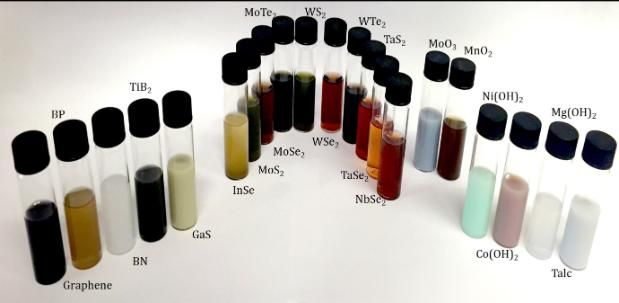Liquid phase exfoliation
Liquid phase exfoliation is a versatile method for producing 2D materials from layered crystals. It was invented in this research group in 2006 and has since then become a very widely used production technique. This technique involves using ultrasonication or high-shear mixing to exfoliate layered crystals in appropriate liquids, for example surface energy matched solvents, aqueous surfactant solutions or polymer solutions. It results in dispersions of few-layer nanosheets with thickness is typically between one and 20 layers and lateral sizes between 50 and 1000 nanometers. Depending on the exfoliation method these dispersions can be produced at concentrations of up to a few grams per liter. A key feature of this method is its versatility. To date, we have used liquid phase exfoliation to produce dozens of different types of 2D material including graphene, boron nitride, molybdenum disulfide and phosphorene, as well as layered oxides, layered hydroxides and layered silicates.

